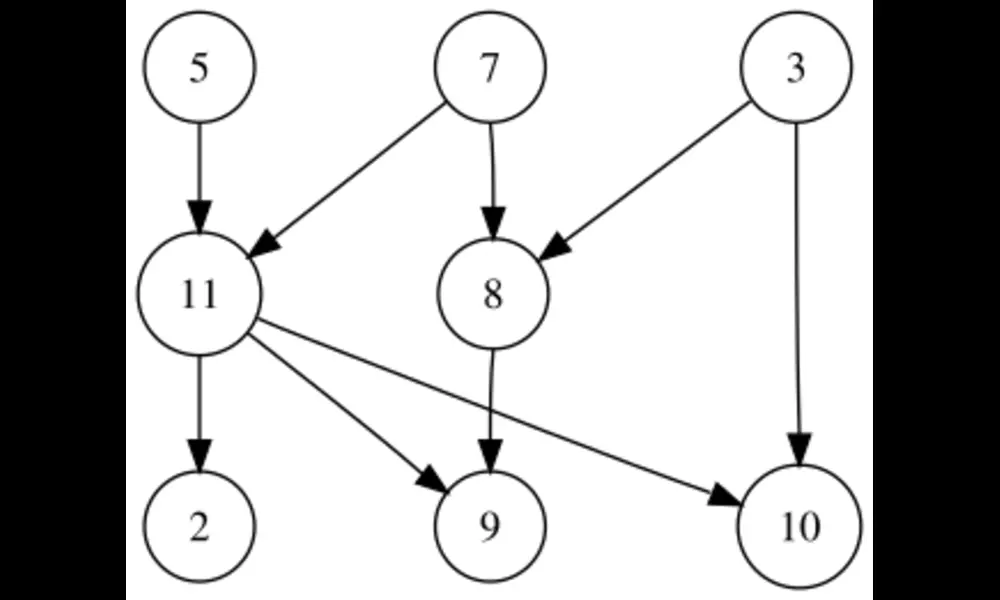New Algorithm Improves Digraph Network Efficiency
Published on Thu Mar 21 2024 File:Directed acyclic graph 2.svg | Joey-das-WBF on Wikimedia
File:Directed acyclic graph 2.svg | Joey-das-WBF on WikimediaIn a groundbreaking study, a team of researchers from France has unveiled a novel approach to organizing digital networks that could significantly boost the efficiency of data flow. Their research, detailed in the paper "Temporalizing Digraphs via Linear-size Balanced Bi-trees," offers a fresh perspective on scheduling connections within a strongly connected directed graph (digraph), an issue critical to optimizing data transmission in complex network systems.
Digraphs are like one-way streets in a city map where traffic can only flow in predetermined directions. Ensuring that data packets reach their destination as swiftly as possible through these digital "streets" is a complex task. The study focuses on maximizing the number of "forward connected pairs" – essentially finding the best way to arrange these one-way streets to ensure maximum connectivity and data flow efficiency.
The researchers introduced an ingenious method involving the construction of a "balanced bi-tree" – a specialized tree structure within the digraph that guides the scheduling of connections. This novel construction addresses a long-standing open problem and provides a quadratic time solution to improve network efficiency. By reimagining data pathways as trees with roots and branches, the team presents a strategy that enhances connectivity between data points, ensuring a smoother and more efficient flow of information.
Their findings have not only theoretical significance, offering insights into the complexities of network connectivity but also practical applications in improving the infrastructure of digital communication networks. From enhancing the speed and reliability of internet traffic to optimizing routes within vast data centers, the implications of their research are far-reaching.
This milestone achievement marks a significant advance in the field of computer science, particularly in the study of temporal networks – systems where connections between points change over time. By offering a more efficient method to sequence these changing connections, the researchers pave the way for faster, more reliable digital communication.
As networks continue to grow in size and complexity, the efficient scheduling of data paths becomes increasingly crucial. This study's revelations offer a beacon of hope for overcoming some of the most persistent challenges in network design and operation, promising a future where data flows unimpeded through the digital arteries of the world's communication infrastructure.



